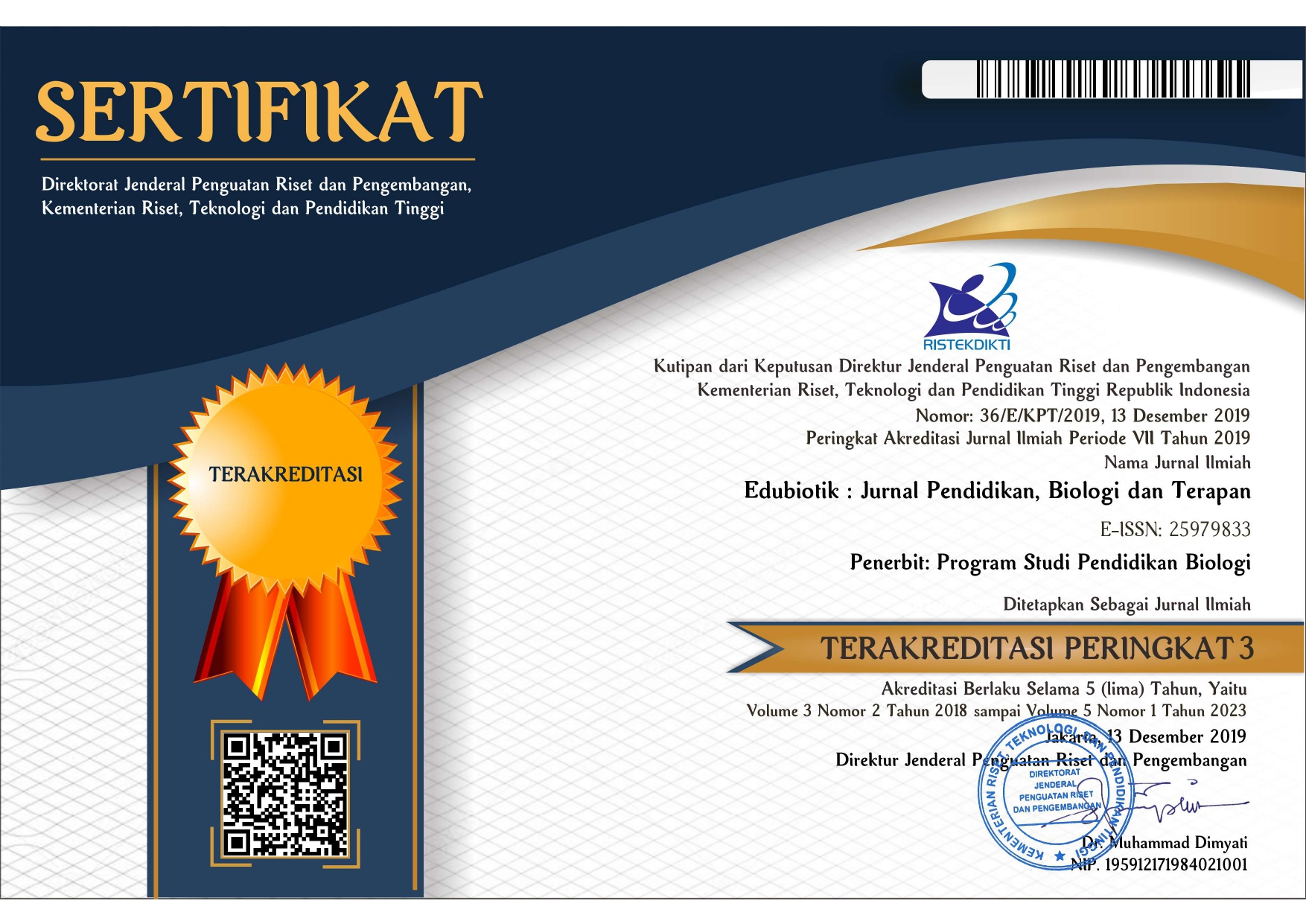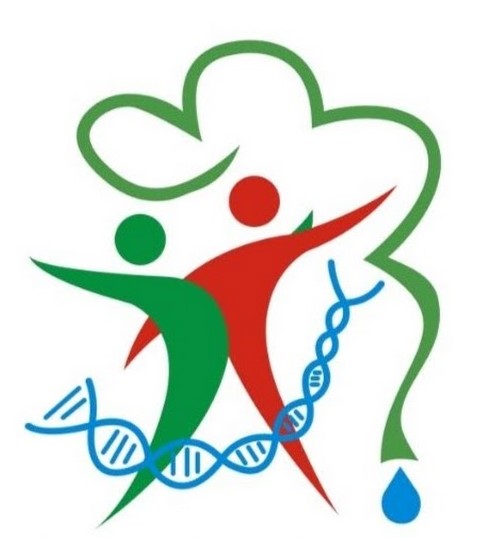Predicting environmental problem-solving skills with a dynamic system in elementary education
Abstract
Numerous environmental problems drive discussion to solve them. Students require environmental problem-solving skills to solve the existing problems. The study aimed to describe environmental problem-solving skills in Elementary Education. The research method is descriptive using a system dynamics approach. Instrument of Higher Order Thinking Skills (HOTS) and Pro-Environmental Behavior (PEB) used to measure students score in environmental topic. Sample was chosen by simple random sampling. The research used VENSIM software to create the modeling. The research results indicate that the score of the environmental problem-solving skills tends to increase due to the Higher Order Thinking Skills (HOTS) and Pro-Environmental Behavior (PEB). Moreover, there are other influencing factors including learning media and students’ activity in their environment. An increase of 5 points in the environmental problem-solving skills every year will be derived if the teachers perform various learning innovations. The research concludes that environmental problem-solving skills in low category and can be improve by various learning innovations.
References
Anderson, L. W., Krathwohl, D. R., Airiasian, W., Cruikshank, K. A., Mayer, R. E., Pintrich, P. R., Raths, J., & Wittrock, M. C. (2001). A taxonomy for learning, teaching and assessing: A revision of bloom’s taxonomy of educational objectives. Longman.
Athreya, B. H., & Mouza, C. (2017). Thinking Skills for the Digital Generation. In Thinking Skills for the Digital Generation. Springer. https://doi.org/10.1007/978-3-319-12364-6_1
Baradaran, V., & Keshavarz, M. (2015). An integrated approach of system dynamics simulation and fuzzy inference system for retailers’ credit scoring. Economic Research-Ekonomska Istrazivanja , 28(1), 959–980. https://doi.org/10.1080/1331677X.2015.1087873
Bowden, H. M. (2019). Problem-solving in collaborative game design practices: epistemic stance, affect, and engagement. Learning, Media and Technology, 44(2), 124–143. https://doi.org/10.1080/17439884.2018.1563106
Cavalheiro, M. B., Joia, L. A., & Cavalheiro, G. M. do C. (2019). Towards a Smart Tourism Destination Development Model: Promoting Environmental, Economic, Socio-cultural and Political Values. Tourism Planning and Development, 0(0), 1–23. https://doi.org/10.1080/21568316.2019.1597763
Eker, S., Zimmermann, N., Carnohan, S., & Davies, M. (2018). Participatory system dynamics modelling for housing, energy and wellbeing interactions. Building Research and Information, 46(7), 738–754. https://doi.org/10.1080/09613218.2017.1362919
Garcia, L. C. (2015). Environmental science issues for higher-order thinking skills (hots) development: A case study in the Philippines. In Biology Education and Research in a Changing Planet (pp. 45–54). https://doi.org/10.1007/978-981-287-524-2
Gil-Glazer, Y., Walter, O., & Eilam, B. (2019). Photolingo-development and improvement of higher-order thinking and language skills through photographs. Journal of Education, 199(1), 45–56. https://doi.org/10.1177/0022057419843523
Heong, Y. M., Yunos, J., Othman, W., Hassan, R., Kiong, T. T., & Mohamad, M. M. (2012). The needs analysis of learning higher order thinking skills for generating ideas. Procedia - Social and Behavioral Sciences, 59, 197–203. https://doi.org/10.1016/j.sbspro.2012.09.265
Hu, Q., & Zheng, Y. (2020). Smart city initiatives: A comparative study of American and Chinese cities. Journal of Urban Affairs, 1–22. https://doi.org/10.1080/07352166.2019.1694413
Husamah, H., Fatmawati, D., & Setyawan, D. (2018). OIDDE learning model: Improving higher order thinking skills of biology teacher candidates. International Journal of Instruction, 11(2), 249–264. https://doi.org/10.12973/iji.2018.11217a
Ichsan, I. Z., Rahmayanti, H., Purwanto, A., Sigit, D. V., Irwandani, I., Ali, A., Susilo, S., Kurniawan, E., & Rahman, M. M. (2020). COVID-19 outbreak on environment: Profile of islamic university students in HOTS-AEP-COVID-19 and PEB-COVID-19. Tadris: Jurnal Keguruan Dan Ilmu Tarbiyah, 5(1), 167–178. https://doi.org/10.24042/tadris.v5i1.6283
Istiyono, E., Dwandaru, W. S. B., Setiawan, R., & Megawati, I. (2020). Developing of computerized adaptive testing to measure physics higher order thinking skills of senior high school students and its feasibility of use. European Journal of Educational Research, 9(1), 91–101. https://doi.org/10.12973/eu-jer.9.1.91
Jackson, M. C. (2001). Critical systems thinking and practice. European Journal of Operational Research. https://doi.org/10.1016/S0377-2217(00)00067-9
Kaiser, F. G., & Wilson, M. (2004). Goal-directed conservation behavior: the specific composition of a general performance. Personality and Individual Differences, 36(7), 1531–1544. https://doi.org/10.1016/j.paid.2003.06.003
Lee, A. Y. L. (2016). Media education in the school 2.0 era: Teaching media literacy through laptop computers and iPads. Global Media and China, 1(4), 435–449. https://doi.org/10.1177/2059436416667129
Lodato, T., French, E., & Clark, J. (2018). Open government data in the smart city: Interoperability, urban knowledge, and linking legacy systems. Journal of Urban Affairs, 1–15. https://doi.org/10.1080/07352166.2018.1511798
Miarsyah, M., Rusdi, R., Aryani, N. D., & Ichsan, I. Z. (2019). MEBA: Development android-based ecosystem module for senior high school students. Indian Journal of Public Health Research and Development, 10(8), 2114–2118. https://doi.org/10.5958/0976-5506.2019.02168.5
Murtonen, M., & Ballo, K. (2019). Redefining Scientific Thinking for Higher Education. In Redefining Scientific Thinking for Higher Education: Higher-Order Thinking, Evidence-Based Reasoning and Research Skills. Springer. https://doi.org/10.1007/978-3-030-24215-2_2
Najim, A. H., & Salman, O. S. (2020). Smart cities supported IoT : an overview. International Journal of Advanced Science and Technology, 29(02), 2108–2118.
Piyapong, J. (2019). Factors Affecting Environmental Activism, Nonactivist Behaviors, and the Private Sphere Green Behaviors of Thai University Students. Education and Urban Society, 001312451987714. https://doi.org/10.1177/0013124519877149
Rochman, S., & Hartoyo, Z. (2018). Analisis High Order Thinking Skills (HOTS) Taksonomi Menganalisis Permasalahan Fisika. Science and Physics Education Journal (SPEJ), 1(2), 78–88. https://doi.org/10.31539/spej.v1i2.268
Sandberg, K. W., & Ohman, G. (2011). Learning in innovation development. Procedia - Social and Behavioral Sciences, 28, 379–383. https://doi.org/10.1016/j.sbspro.2011.11.072
Santi, D. H., Prayitno, B. A., & Muzzazinah, M. (2019). Problem solving process and creative thinking of students in ecosystem issue. JPBI (Jurnal Pendidikan Biologi Indonesia), 5(3), 537–548. https://doi.org/10.22219/jpbi.v5i3.9647
Seechaliao, T. (2017). Instructional strategies to support creativity and innovation in education. Journal of Education and Learning, 6(4), 201–208. https://doi.org/10.5539/jel.v6n4p201
Tajudin, N. M., & Chinnappan, M. (2016). The link between higher order thinking skills, representation and concepts in enhancing TIMSS tasks. International Journal of Instruction, 9(2), 199–214. https://doi.org/10.12973/iji.2016.9214a
Urbani, J. M., Truesdell, E., Urbani, J. M., Roshandel, S., Michaels, R., & Truesdell, E. (2017). Developing and modeling 21st-century skills with preservice teachers. Teacher Education Quarterly, 44(4), 27–51. https://eric.ed.gov/?id=EJ1157317
Vidergor, H. E., & Krupnik-Gottlieb, M. (2015). High order thinking, problem based and project based learning in blended learning environments. In Applied Practice for Educators of Gifted and Able Learners (pp. 217–232). https://doi.org/10.1007/978-94-6300-004-8_11
Vogelaar, B., & Resing, W. C. M. (2018). Changes over time and transfer of analogy-problem solving of gifted and non-gifted children in a dynamic testing setting. Educational Psychology, 38(7), 898–914. https://doi.org/10.1080/01443410.2017.1409886
Yesiltas, E. (2016). An Analysis of Social Studies Teachers’ Perception Levels Regarding Web Pedagogical Content Knowledge. International Education Studies, 9(4), 108. https://doi.org/10.5539/ies.v9n4p108





.png)
2.png)

1.jpg)


